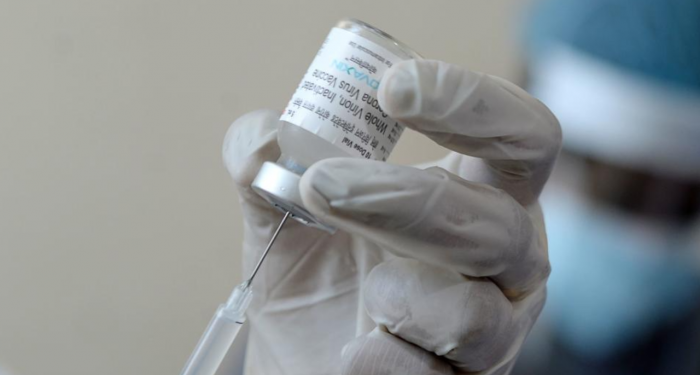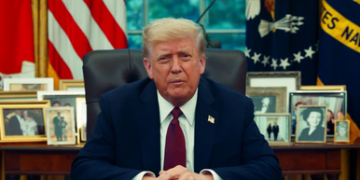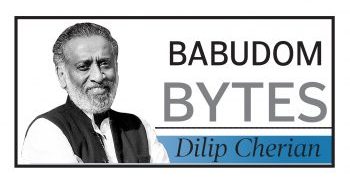Santosh Kumar Mohapatra
A government is elected to perform and serve people, not to publicise its achievements at the cost of taxpayers’ money. But, the present ruling dispensation at the Centre attributes all its failures to previous governments or to the act of God but unashamedly takes credit for any major achievement. It resorts to publicity blitzkrieg in such a way that the government has no responsibility towards its citizens and what it is doing is only out of its magnanimity.
On October 21, India achieved the milestone of administering 100 crore vaccines to tame the menace of coronavirus. The government left no stone unturned to take credit for the achievement with the Prime Minister writing an opinion piece in leading national, regional dailies and addressing the nation in the exaltation of his government’s effort.
He lauded India’s journey in administering 100 crore jabs and described it as a “journey from anxiety to assurance.” He also hailed this landmark as a collective spirit of 130 crore Indians and a reflection of ‘new India’s’ determination and will to achieve tough targets. He stressed that this milestone was enough to silence critics and India has earned applause throughout the world through this commendable achievement. However, China has crossed the same milestone much before (in June 2021). By this time, China has administered 223 crore doses, more than twice that of India.
It is wrong to assume that India has performed well in comparison to other countries in inoculating its own people. The comparison should be made in relative terms, not absolute terms.
A vaccinated person refers to someone who has received at least one dose of a vaccine, and a fully vaccinated person has received all required doses of a vaccine. According to Covid World Vaccination Tracker based on a data project at the University of Oxford (The New York Times), as of October 21, the vaccination rate of first dose in India was 51 per cent, marginally higher than the world average of 49.6 per cent (i.e, 360 million). But if the second dose is considered, the vaccination rate in India was only 21 per cent, much lower than the world average of 38 per cent.
India might have administered 100 crore vaccine doses, but the milestone masks a yawning gap. In India, the time interval between the first and second doses is the highest. This has raised concerns that a large swathe of the population still remains susceptible to the highly infectious delta variant. In order to vaccinate all of the country’s 94A crore adults by December; an additional 23.43 crore doses will be required to provide at least the first dose to adults who have not been vaccinated. If children are included, another 12 crore doses are needed to administer the first dose. In about 16 countries, 90 per cent of the population has been vaccinated, and 70 countries have re-ported more than the world aver-age. Sixty countries have already given two doses to 37 per cent of their population. In fact, India lags behind 77 countries in terms of the vaccination rate. The UAE, Portugal, Cuba, Chile, Malta, Qatar; Singapore, and Cambodia are at the forefront of the world. In terms of the first dose of vaccine rates per 100 population, the European Union (66), the UAE (98), Cuba (86), Spain (81), China (79), Italy (76), Japan (76), France (76), Brazil (74), the UK (74), Germany (69.66), Israel (69), Sri Lanka (68), the US (66), are much ahead of India.
Even in terms of the second dose, the European Union (57.4), the UAE (88), Cuba (61), Spain (66), Germany (66), China (75), Italy (71), Japan (69), France (68), Brazil (52), the UK (68), the US (57), Sri Lanka (59), Israel (63), are in a much better position than India. While 0.7 per cent of the world’s population has been given another additional dose or booster dose, no one in India has received this. In Israel, 43 per cent of the eligible population has received the booster dose.
In reality this publicity blitzkrieg was a deliberate attempt to circumvent prevalent concerns about this government’s inept handling of the pandemic and to erase from the memory of people the excruciating experience they had to undergo during the second wave of the pandemic.
This unwarranted publicity blitzkrieg is an affront to those who have succumbed to the infection or those families whose members have died or suffered a lot, became insolvent, or sold proper-ties for treatment. Hence, before celebrating the government should have fathomed the plight and sufferings of more than 3.4 crore Indians who were infected and families of 4.53 Ian Indians who succumbed to the infection. It triggers a sense of consternation in mind to recall the horrifying experience when India was in the grip of a rampaging second wave leading to mammoth loss of lives and livelihoods. Our under-funded, decrepit health system buckled. Indian hospitals turned away patients. Many patients died due to lack of oxygen and bed.
India’s economic recovery continues to be fragile with the momentum getting hobbled by the continued threat of the pandemic. With the emergence of new challenges, such as rising inflation, in-equality, poverty, hunger with concomitant decline of purchasing power India’s problem will be more intractable. India is now experiencing a bumpy K-shaped economic recovery which needs to be addressed first.
The author is an Odisha-based columnist and economist. Views are personal.






































